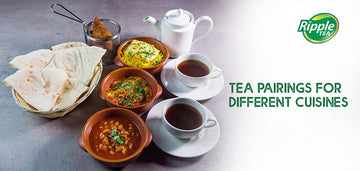The Rise of Speciality Tea
While traditional teas like green, black, and white have long been enjoyed, the rise of specialty tea has brought a new dimension to the tea-drinking experience. Specialty tea is often crafted from high-quality, single-origin leaves, selected with great care. These teas offer unique and nuanced flavour profiles, making them perfect for pairing with a variety of dishes.
Speciality teas like classic green tea with natural jasmine or black tea with natural elaichi offer distinctive flavours that go beyond the traditional tea experience. By pairing these specialty teas with food, you can create a multi-sensory experience that highlights both the complexities of the tea and the flavours of the meal.
Pairing tea with food is an exciting way to elevate your dining experience. By understanding the unique flavours of different types of tea—whether it’s a strong black tea or a delicate white tea—you can create complementary or contrasting pairings that enhance the meal. From the delicate jasmine notes of green tea to the warming spices of black tea with elaichi, tea offers endless possibilities for food pairings. And with the rise of specialty tea, there’s even more room to experiment and discover new flavour combinations.
So next time you’re preparing a meal, don’t forget to consider the tea pairing—it could just be the perfect finishing touch to your culinary experience.













